RahXephon
In a decade rife with stellar release from Studio Bones, RahXephon stands out. An ambitious and sleek production which draws upon a diverse mix of sources from obscure Mayan lore to classical music to create a symphony of unparalleled beauty. Continuously stunning, it deftly handles a wide cast of characters as well as a plot laden with symbolism which bountifully rewards shrewd analysis and constant attention. At a time when the mecha genre was overburdened, RahXephon excelled by weaving a story unshackled by genre tropes and creating a genuine classic of immense longevity and awesome breadth.
Ayato Kamina lives in the last bastion of humankind: Tokyo; a cataclysm having supposedly wiped out the rest of humanity. When an attack strikes the city he is aided by woman who claims to be able to explain the chaotic world he lives in. After awakening the humanoid machine RahXephon he and the woman, Haruka Shitow, are transported outside of Tokyo and he discovers the lies perpetrated by those in power: that Tokyo was forcibly cut off from the rest of the world and a race known as the Mu are responsible. Despite his reticence, he is the only one who can operate the RahXephon and with it the capability to defeat the Mu's warmachines, the Dolems. Throughout all of this is the mysterious Reika Mishima who appears seemingly without reason and the quiet but whimsical Quon who seems to have a connection to both Ayato and the RahXephon. Ayato's position as an Instrumentalist may have bigger consequences than simply the defeat of the Mu.
Unbeknownst to those watching the series for the first time, the opening is one of the most revealing parts of the show, squeezing myriad spoilers into only a minute and a half. Accompanied by the sublime Maaya Sakamoto and composed by Yoko Kanno, it foretells many of the twists and revelations that only occur later in the narrative. This type of inference however is indicative of a wider attitude whereby the series favours subtle but retrospectively blatant allusions rather than cudgel like exposition. Multifaceted elements litter the landscape from the name of the TERRA headquarters to the small blue bird that the commander keeps within a cage. This is a series that desperately wishes to be analysed, not just because of the time and detail breathed into it but because it is so rare that a plethora of otherwise disparate parts operate in a near perfect harmony.
Just as the antagonists, the Mu, are inspired by obscure Mayan scriptures, likewise the enigmatic Reika and her relationship to Ayato, while never explicitly stated, her recurrence throughout the story as pseudo-spectral guide hints at her importance both to the story and Ayato. The obvious explanation for her sudden appearances is a connection to the RahXephon; however it isn't until Ayato's relationship with Haruka is explored that Reika's appearance, as a young girl of his past clothed in a plain yellow dress, makes sense. All of this subtext though does not detract from or eclipse the stunning cast: Ayato who has a passion and a maturity to him tempered by ongoing events; Haruka, driven and forthright she is proactive to the point of foolhardiness but baulks when expressing herself; the rejected Instrumentalist Itsuki; the scorned doctor Megumi; the soft-spoken career officer Souichi. The sheer number of superb characters can overwhelm the unexpected, especially with the complex and shifting relationships that surge beneath the primary narrative. Nevertheless each is judiciously used and every scene is fastidiously judged to provide as much insight as necessary without excess.
Meticulous though it may be, this approach is far from bloodless but can at times come across as surgically precise - not helped by the imaginative and supremely detailed aesthetics which evoke a acute futurism of ergonomic corners and spartan minimalism. Everything from the most innocuous cellphone to the hydrofoil ships have been pored over and elicit not a possible, but an emerging future aesthetic. Characters on the other hand have a pleasing angularity to them thanks to Akihiro Yamada's unique designs and animate beautifully throughout. Combat, often the downfall of quality, is rendered with aplomb and is startlingly fluid when given the complexity of both the mechanical designs and the opponents. The Dolems are each gifted with an operative vocal name while their construction oscillates from stony monolith to fleshy phallicism, the latter more telling when placed in context with the sexual tension that bubbles in the chemistry between some characters.
Far from the usual smutty fare, these are rife with underlying meaning whether it is between Ayato and Haruka, Sayoko and Makoto or Megumi and Souichi, the subject is always treated with the respect and complexity expected from a mature show. Ageing the cast from the usual teenagers to the twilight of adolescence allows for a far greater scope of emotions and situations, but most crucially it divorces the series further from its more rowdy sibling, Evangelion. Whereas that series is a cacophony of classical music and dissonant sound effects, this is quieter affair and is and conducted with boundless grace. Of course it does itself no favours by aping some of the iconic situations featured in Evangelion and retaining the climax of a young boy deciding the fate of the world - "retuning" in series' parlance - but whereas Evangelion wears its intellectualism on its sleeve, RahXephon presents a story first and mythos later. The payoff is evident in every story thread: rich in emotion and poignancy, the deaths cut deeper, the passion clings tighter and there is a clarity and purposefulness to every scene no matter how fleeting or epic it is.
In the last ten years, RahXephon is one of the most classically brilliant series released. It orchestrates a story bereft of genre and draws on a cornucopia of different sources to create an intoxicating concordance of characters, narrative, symbolism and entertainment. Cerebral almost to the point of being unapproachable, it challenges the viewer to tease out the different analogies and tracks of thought until their understanding of it matches the obviously monumental effort that it took to compose it. A landmark series that will cast a long shadow for many years to come.
Vitals
First aired: 21 January 2002
Finished airing: 10 September 2002
Movie aired: 19 April 2004
Episodes: 26 + 1 Movie
Availability: DVD — Amazon.com, Amazon.co.uk, United Publications (UK)
References: MyAnimeList, Wikipedia, AniDB, Anime News Network

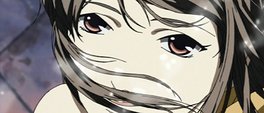
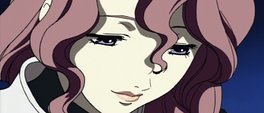

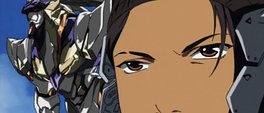

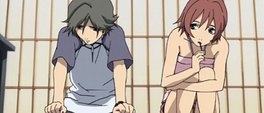
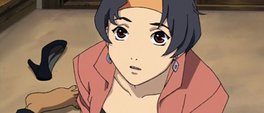
I've seen this twice now and still don't fully understand it, although the spin-off movie was even worse in that respect (when you need to include a character relationships diagram in the DVD case, I reckon you've slipped up somewhere along the line).
Its maturity in approach assumes you are an adult with an adult's attention span though, which I really appreciated; there's nothing worse than a story that insults your intelligence! As you say, it also draws from some eclectic sources for its mythos...and as for the idea of making mecha literally musical instruments...that looked like a really clever and affectionate tribute to Macross to me.
I badly need to rewatch this now. After several years of anime watching in the years after the DVDs first came out I'm sure I'll appreciate it all the more. Can't wait to see what makes your final two top spots after reading what you've selected so far. ^_^